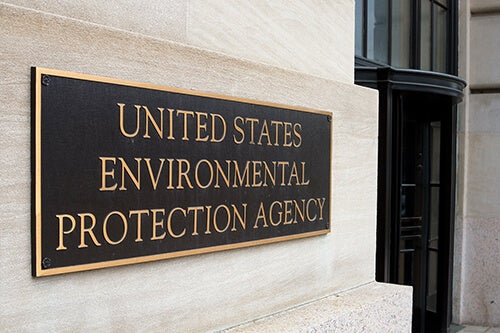Suppliers to automotive original equipment manufacturers (OEMs) are in scope of more regulatory requirements than ever before — and as a result, they face mounting challenges in maintaining compliance. While the OEM-mandated International Material Data System (IMDS) provides these suppliers with a way to address some of these challenges, it has several limitations.
As such, suppliers often must look beyond IMDS reporting and supplement their compliance programs with additional tools to ensure they can satisfy all their regulatory requirements.
Increased Focus on Responsible Mineral Sourcing
A 2014 Deloitte report on the automotive industry’s mineral sourcing efforts described modern automobiles as “computers on wheels.” The growing number of electrical and electronic components now installed in automobiles means that even the most basic vehicles contain various components that use conflict minerals at some point in the manufacturing process.
Read our eBook, Navigating the Compliance Landscape in the Automotive Industry, to learn more about how you can manage regulatory data effectively in 2020 and beyond.
The metals used in automotive manufacturing bring these companies in scope of several pieces of conflict minerals legislation, such as Section 1502 of the Dodd-Frank Wall Street Reform and Consumer Protection Act and the European Union (EU) Conflict Minerals Regulation. Under the Dodd-Frank Act, public companies must annually report on the presence of conflict minerals (defined as tin, tantalum, tungsten and gold, and collectively known as 3TGs) to the U.S. Securities and Exchange Commission. Even suppliers that aren’t directly in scope of the Dodd-Frank Act may be asked to submit data, as the OEMs they sell to are required to perform this supply chain due diligence.
The IMDS doesn’t accept the Conflict Minerals Reporting Template or the Cobalt Reporting Template, both of which are industry standards used to collect data and determine material country of origin. As conflict-affected and high-risk areas (CAHRAs) for other minerals become a greater concern, suppliers will require a more robust and dynamic solution. This is most apparent in the increasing overlap between the automotive and high-tech industries, particularly around cobalt sourcing for lithium-ion battery production in electric vehicles.
A recent lawsuit alleged that major tech companies, including an electric vehicle manufacturer, have sourced cobalt from operations that used child labor. This lawsuit has added more pressure to automotive suppliers, who must report on conflict minerals in their products and supply chains on top of their responsibilities under the IMDS.
To learn more about the regulatory challenges facing automotive suppliers, download Beyond the Database: Your Guide to Expanding Automotive Supply Chain Requirements.
Additional Regulatory Responsibilities
Faced with a slowing automotive market, suppliers of OEMs are increasingly diversifying their offerings to remain viable as the market recovers. Selling into other markets and verticals increases the requirements these suppliers face. For example, under the EU End-of-Life Vehicles (ELV) Directive, electrical and electronic components in finished vehicles are excluded from reporting requirements under the EU Restriction of Hazardous Substances (RoHS) Directive. If a company sold these components to other markets or provided them as replacement parts or aftermarket products, however, they would come into scope of RoHS and face a different set of substance restrictions.
The EU Registration, Evaluation, Authorisation and Restriction of Chemicals (REACH) Regulation and its list of Substances of Very High Concern (SVHCs) are also a priority for suppliers. Parts manufactured or sold in the EU must comply with this regulation, and the growing list of SVHCs represents an always-moving target for companies to meet. The introduction of the Substances of Concern In articles, as such or in complex objects (Products) (SCIP) database, mandated by the EU Waste Framework Directive, imposes further requirements for automotive companies, which are well outside the scope of the IMDS.
On the trade side, the automotive industry will be heavily impacted in 2020 as the United States-Mexico-Canada Agreement (USMCA) replaces the North American Free Trade Agreement (NAFTA). Under the USMCA, automotive companies are required to pay closer attention to material country of origin and the labor practices involved in sourcing, due to new sourcing rules that require more parts be manufactured in North America.
Currently, the IMDS does not address the broad scope of reporting requirements automotive suppliers face. While it allows OEMs to fulfill their obligations under the ELV Directive and Reusability, Recyclability and Recoverability (RRR) Directive, actors in their supply chains face a wider set of requirements.
Supplementing the IMDS
Gathering a wide variety of data from the supply chain is crucial to meeting the requirements of various regulations that impact the automotive industry, and can help companies identify and mitigate risks before they impact their business. This creates challenges for suppliers, who will need to allocate additional resources or supplement the system with further tools.
As such, going beyond the IMDS is vital for automotive suppliers to ensure they have the information they need to respond to customer data requests. With the Assent Compliance Platform, automotive suppliers can collect and manage the data necessary to meet their customers’ requirements, enabling them to maintain contracts. For more information, contact us today.









